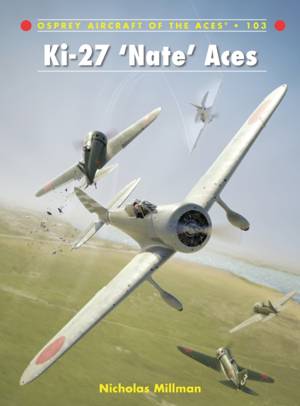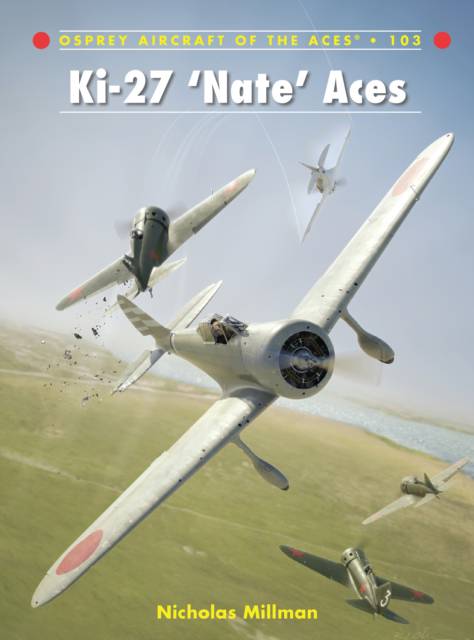
- Retrait gratuit dans votre magasin Club
- 7.000.000 titres dans notre catalogue
- Payer en toute sécurité
- Toujours un magasin près de chez vous
- Retrait gratuit dans votre magasin Club
- 7.000.0000 titres dans notre catalogue
- Payer en toute sécurité
- Toujours un magasin près de chez vous
25,45 €
+ 50 points
Description
Introduced into service early in 1938 during a time of extensive re-organisation of Army air units, the Ki-27, known as the 97 Sen by its pilots, achieved its first successes during the so-called 'China Incident' against the mainly biplane types operated by the Chinese. On 10 April 1938 Ki-27 pilots of the 2nd Daitai (later to become the 64th Sentai) claimed 24 Chinese biplane fighters shot down for the loss of only two of their own. Almost within a year of its combat debut against the Chinese the 97 Sen was to be tested in fighting against the Russians during the Nomonhan Incident of 1939. Initially the 97 Sen proved superior to the Soviet I-16 monoplanes, but the latter were hastily modified to better engage the Japanese fighter and the Russian pilots rapidly adapted to exploit their own strengths and the enemy weaknesses. A handful of Japanese Army Air Force (JAAF) aces emerged from this showdown to be lauded by the Japanese press and ever associated with the iconic 97 Sen - Shimada the 'Red-Legged Hawk', Shihonara the 'Richthofen of the Orient' and Yoshiyama, the 'warrior of the Holombile Plateau'. These were the glory days for the JAAF and many of the successful 97 Sen pilots went on to become the outstanding leaders and veteran aces of the Pacific War. By December, 1941 the JAAF had just started to replace the 97 Sen with the more modern Hayabusa, but the fixed undercarriage fighter still equipped 17 of the 19 Army fighter Sentai and took the brunt of the offensive against the British and Americans in Southeast Asia and the Philippines, as well as the Homeland Defence capability at the time of the Doolittle Raid. Initially facing more modern Allied types of fighter, the 97 Sen was more than able to hold its own by exploiting its outstanding aerobatic qualities. But the writing was on the wall for an unarmoured, fixed undercarriage aircraft with two rifle-calibre machine guns as the Allies consolidated and began their fightback. In China, Chennault had already assessed the 97 Sen's strengths and weaknesses, describing it as a fighter that 'climbs like a sky rocket and manoeuvres like a squirrel'. Prior to the outbreak of the Pacific War he had sent a complete dossier on the type to the USA where it was studiously ignored. The pace of re-equipment with new types and the resurgence of Allied airpower required JAAF units to continue with the 97 Sen as main equipment, especially on the quieter fronts and in Home Defence. By 1943 it was considered seriously obsolete but was still being encountered in combat by Allied pilots, especially in the air defence role. The Ki-27 also found an important secondary role as an armed fighter trainer, equipping an important number of training units and flying schools. The Mansyu Ki-79, a purpose built trainer produced in both single and two-seater versions, was based on the Ki-27. It also served expediently in the suicide attack role and in at least one epic air defence combat. In February 1945, over Chiba, experienced ace WO Masatoshi Masuzawa, flying one of the open cockpit trainers, downed a US Navt Hellcat. Masuzawa had scored his first victory in a 97 Sen over Nomonhan in 1939, and in three months of fighting there had claimed 12 enemy aircraft shot down. He epitomised the veteran JAAF flyers who had first taken the 97 Sen to war and survived to see the atom bombs dropped on their homeland.
Spécifications
Parties prenantes
- Auteur(s) :
- Editeur:
Contenu
- Nombre de pages :
- 96
- Langue:
- Anglais
- Collection :
- Tome:
- n° 103
Caractéristiques
- EAN:
- 9781849086622
- Date de parution :
- 20-08-13
- Format:
- Livre broché
- Format numérique:
- Trade paperback (VS)
- Dimensions :
- 185 mm x 248 mm
- Poids :
- 317 g

Les avis
Nous publions uniquement les avis qui respectent les conditions requises. Consultez nos conditions pour les avis.






